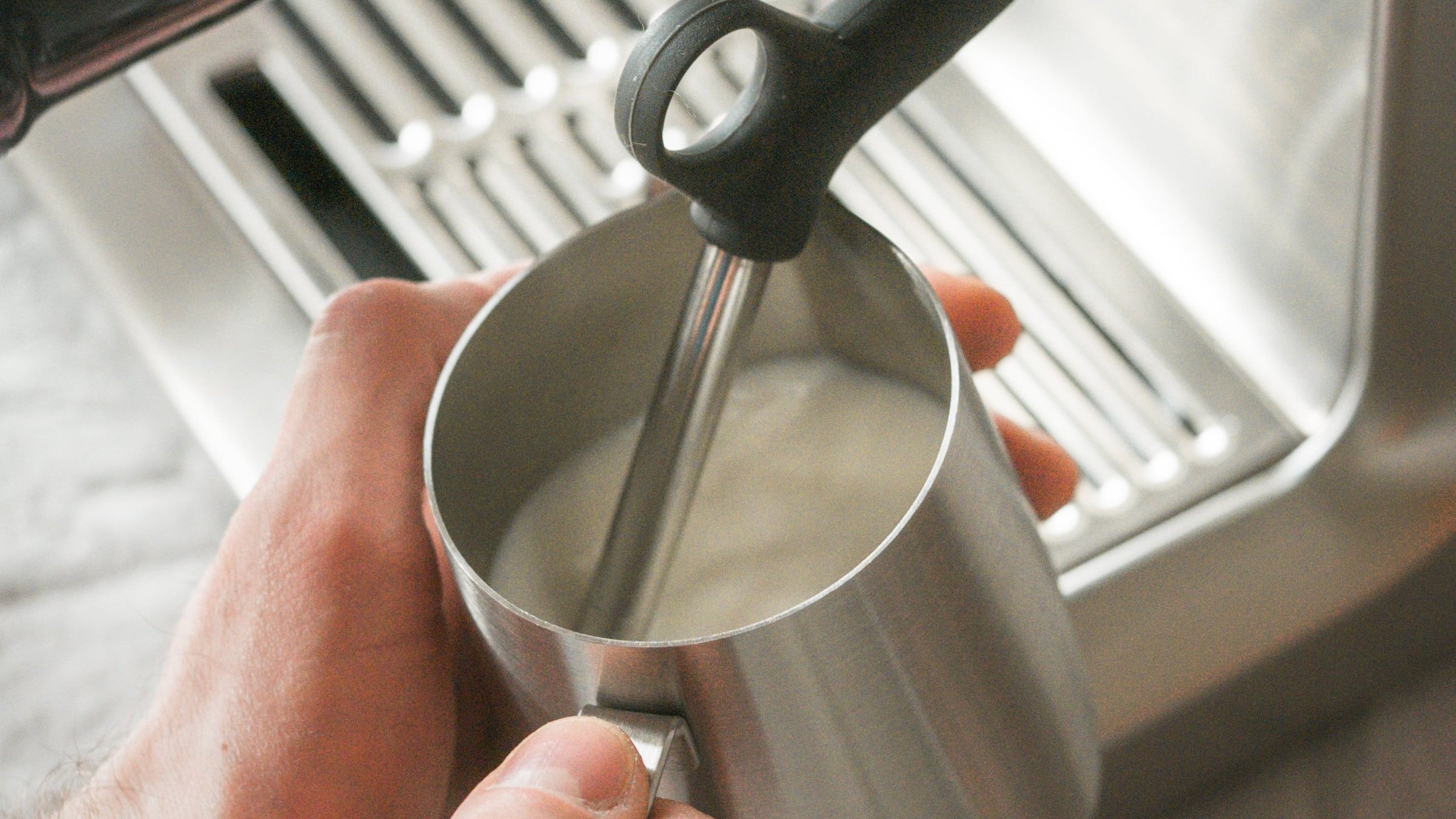Steaming milk at home might seem intimidating at first, but with the right approach, it can become a fun and rewarding part of creating your favorite coffee drinks. Whether it's a silky latte, a frothy cappuccino, or a bold macchiato, mastering steamed milk is essential. The Breville Barista Express is an excellent tool to help you achieve barista-quality steamed milk in your own kitchen. This guide will walk you through every step, offering helpful tips along the way. Discover the advanced features and performance of this machine in our Breville Dual Boiler BES920XL review
The Importance of Steamed Milk in Coffee
Steamed milk does more than add foam to your drink; it completely transforms your coffee experience. Steaming creates microfoam, which consists of tiny bubbles that produce a smooth, creamy texture. This velvety texture enriches your drink by perfectly balancing the espresso’s intensity with a luxurious creaminess that enhances the flavor, texture, and overall experience. Learn about the ease of use and innovation in our Breville Barista Touch Impress review
Preparing Your Breville Barista Express
The Breville Barista Express, known as the Sage Barista Express in the UK, is a popular choice for home coffee enthusiasts. The machine’s efficient steam wand makes it easy to achieve professional results with a bit of practice. Soon, you'll be steaming milk like a seasoned barista, crafting coffeehouse-quality beverages at home. Compare these two popular models in our Breville Barista Express Impress vs Pro review

Tools You Need for Steaming Milk
Before getting started, make sure you have these essential tools:
Breville Barista Express (or Sage Barista Express)
Cold milk (whole milk for best results, or barista-style oat or almond milk for non-dairy options)
Stainless steel milk jug (helps control temperature)
Thermometer (optional, to monitor the milk's temperature)
Step 1: Preparing the Machine
First, ensure that your Breville Barista Express is fully warmed up. When the steam function light turns on, the machine is ready to go, but allowing it to heat for an extra minute helps reach the optimal temperature. Find out which machine suits you better in our Breville Barista Pro vs Express review
Purge the steam wand by briefly turning the steam dial to expel any water that may have collected. This ensures that the wand releases pure steam, which is crucial for achieving the best texture. Explore the key differences between these premium machines in our Breville Oracle vs Oracle Touch review
Step 2: Setting Up the Milk
Pour cold milk into your stainless steel jug until it's about a third full. Using cold milk gives you more time to achieve the right texture before the milk overheats. Whole milk will provide the creamiest results, but if you prefer plant-based options, choose barista-style alternatives designed to froth well.
Step 3: Positioning the Steam Wand
Proper steam wand placement is key to achieving excellent steamed milk. Place the wand tip just beneath the surface of the milk, angled at about 15-20 degrees. This encourages a whirlpool effect, which helps break down large bubbles into a smooth, consistent microfoam.
Tilt the jug slightly, keeping the wand near the edge to create a vortex. This technique promotes even heating and integrates foam smoothly.
Step 4: Steaming the Milk
Turn the steam knob and listen for a soft hissing sound, indicating that air is being incorporated during the "stretching" phase. Keep the wand tip just below the surface to add air without causing splashes.
After 5-10 seconds, lower the jug slightly to fully submerge the wand, entering the "texturing" phase where the milk heats and foam is fully integrated. Maintain a swirling motion throughout to produce a glossy, velvety texture.
Typically, steaming takes 20-30 seconds. If using a thermometer, aim for 150°F (65°C). If you’re relying on touch, stop steaming when the jug is almost too hot to comfortably hold for a few seconds.
Step 5: Cleaning Up and Adding Final Touches
Once your milk reaches the right temperature and consistency, turn off the steam knob. Immediately wipe the steam wand with a damp cloth to prevent milk residue from hardening. Then, purge the wand again to remove any residual milk.
Lightly tap the jug on the counter to remove any larger bubbles and swirl it to ensure a uniform texture. Your goal is a shiny, silky microfoam that's ready to elevate your coffee drink.
Step 6: Pouring the Milk
The pouring technique influences both the presentation and balance of your coffee. Start by slowly pouring from a low height, keeping the jug close to the cup to blend the milk with the espresso. As you near the top, raise the jug slightly and pour faster to add foam. With practice, you can even start trying your hand at latte art to make your drinks look as good as they taste.
Troubleshooting Common Steaming Issues
Steaming milk involves some trial and error. Here are a few common issues and their fixes:
Milk Not Frothing Properly: Ensure that you’re using cold, whole milk or a suitable barista-grade alternative. Make sure the wand is positioned just below the milk’s surface.
Large Bubbles in the Foam: Prevent large bubbles by avoiding too much air. Keep the wand tip at the right height to incorporate air gently.
Overheated Milk: Use a thermometer or stop steaming once the jug is almost too hot to hold comfortably.

Conclusion
Learning how to steam milk with the Breville Barista Express is a skill that takes practice but can be incredibly satisfying. By focusing on precise air incorporation and proper heat control, you can create luxurious microfoam that rivals any café's offerings. Enjoy the creative journey with your Breville, and have fun crafting the perfect cup. Happy steaming!
